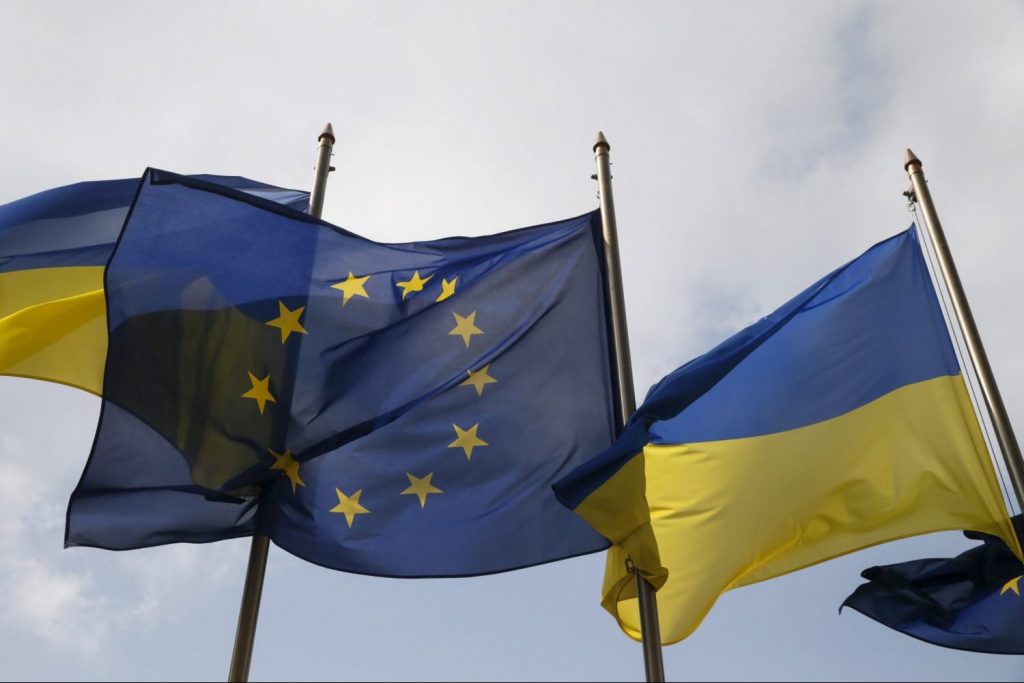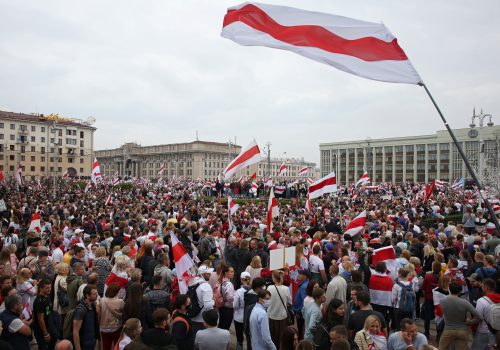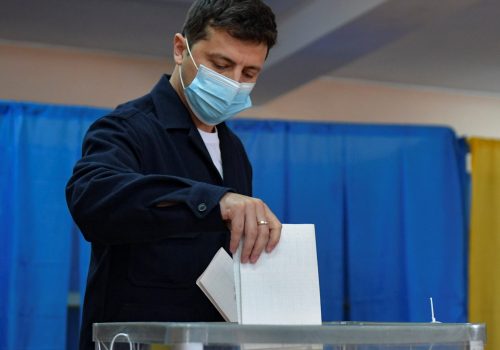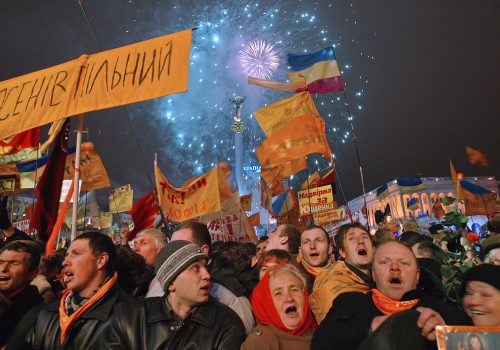On 27 October, Ukraine’s Constitutional Court ruled that the asset declaration system adopted by parliament in 2016 was unconstitutional. Eleven judges voted in favor, while four voted against.
The declaration system obliges Ukrainian state officials to list all their main possessions. It enables the National Agency for Corruption Prevention to compare assets with income in order to identify and prosecute possible corruption. The declarations form the backbone of the fight against corruption, and are widely regarded as one of the central reforms introduced since the country’s 2014 Revolution of Dignity.
The Constitutional Court ruling was greeted with widespread dismay in Ukraine. The country’s Western partners were equally shocked. To most observers, the ruling represented a blatant attack on the anti-corruption system built up with great difficulty over the past six years. Critics saw it as nothing less than a counter-revolution aimed at reestablishing the old system of elite impunity.
Stay updated
As the world watches the Russian invasion of Ukraine unfold, UkraineAlert delivers the best Atlantic Council expert insight and analysis on Ukraine twice a week directly to your inbox.
There is something uniquely Ukrainian about a constitutional crisis sparked by the country’s own Constitutional Court. Court rulings in EU member states are normally assumed to be legally sound. This is not necessarily the case in Ukraine, where the judiciary continues to suffer from widespread allegations of corruption.
It has long been claimed that Ukrainian courts issue rulings under political pressure or in line with the personal interests of individual judges. In recent weeks, the former chairman of the Constitutional Court, Stanyslav Shevchuk, has publicly stated that some of the Court’s judges “are paid for certain rulings.”
Since 2014, Ukraine has made great strides towards reforming the state apparatus and many other aspects of everyday life, but the country’s judiciary has so far proved resistant to change. As a result, opinion polls consistently demonstrate that Ukrainians have no confidence in the court system. This lack of faith is shared by the business community, with potential international investors frequently citing rule of law concerns among the primary reasons preventing them from investing in Ukraine.
Data from the asset declaration system indicates that the eleven judges of the Constitutional Court who were behind the recent ruling, along with their family members, own assets with a value far beyond their official salaries. It is therefore reasonable to conclude that they do not fulfill the “high moral standards” and “professional ethics” that Ukrainian law requires for their appointment. There are also serious questions over adherence to procedural requirements during their appointment, notably the obligation that the selection be competitive.
The Constitutional Court judges are part of a wider system that remains highly vulnerable to manipulation from Moscow or by Ukraine’s own billionaire class of power brokers. Since Ukrainian President Volodymyr Zelenskyy’s election in April 2019, it has become increasingly clear that pro-Kremlin politicians from the Opposition Platform-For Life party and other pro-Russian forces have formed an unholy alliance with Ukrainian oligarchs who share a common goal of derailing Ukraine’s European integration.
It was a complaint from these pro-Kremlin forces in parliament that led to the Constitutional Court’s recent decision to annul the asset declaration system. With a number of similar appeals targeting other crucial reforms still pending, there is a serious risk that the Constitutional Court will seek to further reverse the anti-corruption progress made by Ukraine following the Revolution of Dignity.
Ukraine’s international partners must now recognize that the country faces an existential threat to its survival as a democracy. Indeed, it is no exaggeration to state that the implications of the current constitutional crisis are every bit as serious as the country’s predicament during the revolutionary months of mass protests and draconian counter-measures in winter 2013-14.
Back then, Ukrainians protesting in defense of basic human rights and European democratic values benefited from the active involvement of the European Union. Since 2014, a consistent element of the EU approach to Ukraine has been respect for the long-held aspirations of the Ukrainian people to live in a country where laws are adopted democratically and apply to all citizens, doing away with a system dominated by unaccountable elites.
Ukraine’s current existential crisis demands a similarly supportive EU approach that demonstrates a nuanced understanding of the challenges facing the country. This should be done in close cooperation with the United States and the IMF, Ukraine’s major donor.
Eurasia Center events

With its latest ruling, Ukraine’s Constitutional Court has demonstrated that it is not capable of carrying out its functions in an objective and independent manner. The actions of the Constitutional Court, together with grave concerns over the status and motivations of individual judges, are sufficient to deprive the October 27 ruling of any constitutional legitimacy.
In its December 9 reply to a request from President Zelenskyy, the Council of Europe’s Venice Commission severely criticized the ruling of Ukraine’s Constitutional Court, pointing out the conflicts of interest relating to some judges. Its proposals regarding the future of the Court are expected in a second report that is due shortly.
Unfortunately, there does not appear to be any possibility of appealing the Constitutional Court ruling via existing legal channels. There is also virtually no chance that the case can be submitted to the European Court of Human Rights in Strasbourg. The only way out, therefore, is for the Ukrainian parliament to resolve the crisis. This most likely means adopting a law allowing for the appointment of new judges to the Constitutional Court.
Any new judges would necessarily need to be selected according to stringent criteria. Crucially, the selection process must involve international experts in order to ensure transparency. The model for this approach is the appointment of judges to Ukraine’s High Anti-Corruption Court in 2018, which demonstrated the effectiveness of introducing foreign experts into the selection process. This experience can now help Ukraine fix the country’s Constitutional Court.
It looks like the main battleground in Ukraine’s unfolding constitutional crisis will be the country’s parliament. While President Zelenskyy holds a nominal majority and can also seek out additional alliances with a number of smaller pro-European parties, it remains unclear exactly how many MPs will choose to align themselves with oligarchic or pro-Kremlin interests. There is a very real danger that a decisive number of parliamentarians will seek to stall or block any efforts to overcome the crisis sparked by the Constitutional Court.
This is where Ukraine’s Western partners, including the European Union, can play a key role. They must demonstrate to individual MPs that refusal to halt the destruction of Ukraine’s anti-corruption system will carry significant consequences. Many of the Ukrainian politicians who are driving the current efforts to derail their country’s transition towards a rule of law society also have bank accounts, properties, and businesses registered in the EU. Brussels has at its disposal the possibility of imposing targeted sanctions against such individuals. It should not hesitate to use these instruments if necessary.
Willem Aldershoff is a Brussels-based international affairs analyst and former unit head at the European Commission.
Further reading
The views expressed in UkraineAlert are solely those of the authors and do not necessarily reflect the views of the Atlantic Council, its staff, or its supporters.

The Eurasia Center’s mission is to enhance transatlantic cooperation in promoting stability, democratic values and prosperity in Eurasia, from Eastern Europe and Turkey in the West to the Caucasus, Russia and Central Asia in the East.
Follow us on social media
and support our work
Image: Ukrainian and EU flags fly in front of the Presidential Administration in Kyiv. (REUTERS/Valentyn Ogirenko)




